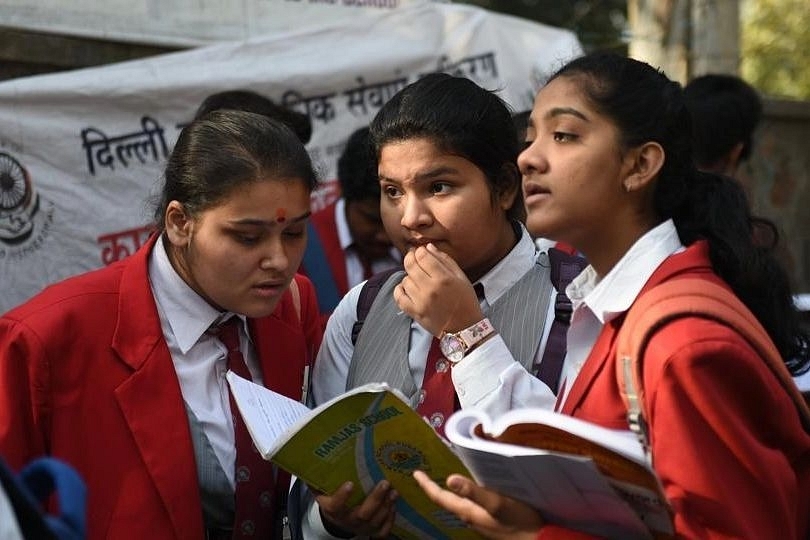News Brief
ASER 2021 Survey: Big Rise In Children Taking Tuitions, Especially In Lower Grades And From Poorer Backgrounds
- In 2018, only 28.6 per cent of children enrolled in schools took tuitions.
- This has now increased to almost 40 per cent and the biggest increase is seen in students in lower grades.

School students in Delhi. (@cbse.students.india/facebook)
The recently released Annual Status of Education Report (ASER), a survey conducted this year in 25 states and three Union Territories covering a total of 76,706 households and 75,234 children in the age group of 5-16 years, has revealed that a big shift in enrolment of children from private schools to government ones has happened thanks to Covid-19 induced financial stress.
Another major revelation is the steady increase in children taking paid tuition. In 2018, only 28.6 per cent of children enrolled in schools took tuitions. This has now increased to almost 40 per cent and the biggest increase is seen in students in lower grades (Classes I to V). The trend holds true for both boys and girls and for children in both private and government schools.
“The largest increases in the proportion of children taking tuition are seen among children from the most disadvantaged households. Taking parental education as a proxy for economic status, between 2018 and 2021, the proportion of children with parents in the 'low' education category who are taking tuition increased by 12.6 percentage points, as opposed to a 7.2 percentage point increase among children with parents in the 'high' education category,” the survey notes.
This finding, as illustrated in the chart below, should be of particular interest to policymakers.
Interestingly, the status of schools (closed or open) had an impact on the proportion of children taking tuition. Those students whose schools had not opened after the lockdowns were more likely to take private paid tuitions than those who were attending schools.
Another interesting finding is that while the availability of smartphones in households surveyed has significantly increased from 36.5 per cent in 2018 to 67.6 per cent in 2021, there is inequity as more children in private schools have a smartphone at home as opposed to government school going children — 79 Per cent and 63.7 per cent respectively.
This is obviously a proxy for economic status of children which was also confirmed by the survey. The likelihood that the household has a smartphone increases with the increase in education levels of their parents. While over 80 per cent of children whose parents have studied up to Class IX or higher had a smartphone at home, this figure declines to 50 per cent for children whose parents had studied till Class V or less — establishing another proxy between education and economic status.
Even among those children with weaker economic background, a good proportion of parents (a quarter of them) bought a smartphone only after lockdown last year so that their children can continue studies online.
But unfortunately, the survey found that smartphone availability did not always translate into its access to children. More than 67 per cent children may have a smartphone at home but more than 26 per cent had no access to it, especially children in lower grades and from poorer states as illustrated in the graph below.
Support Swarajya's 50 Ground Reports Project & Sponsor A Story
Every general election Swarajya does a 50 ground reports project.
Aimed only at serious readers and those who appreciate the nuances of political undercurrents, the project provides a sense of India's electoral landscape. As you know, these reports are produced after considerable investment of travel, time and effort on the ground.
This time too we've kicked off the project in style and have covered over 30 constituencies already. If you're someone who appreciates such work and have enjoyed our coverage please consider sponsoring a ground report for just Rs 2999 to Rs 19,999 - it goes a long way in helping us produce more quality reportage.
You can also back this project by becoming a subscriber for as little as Rs 999 - so do click on this links and choose a plan that suits you and back us.
Click below to contribute.
Latest